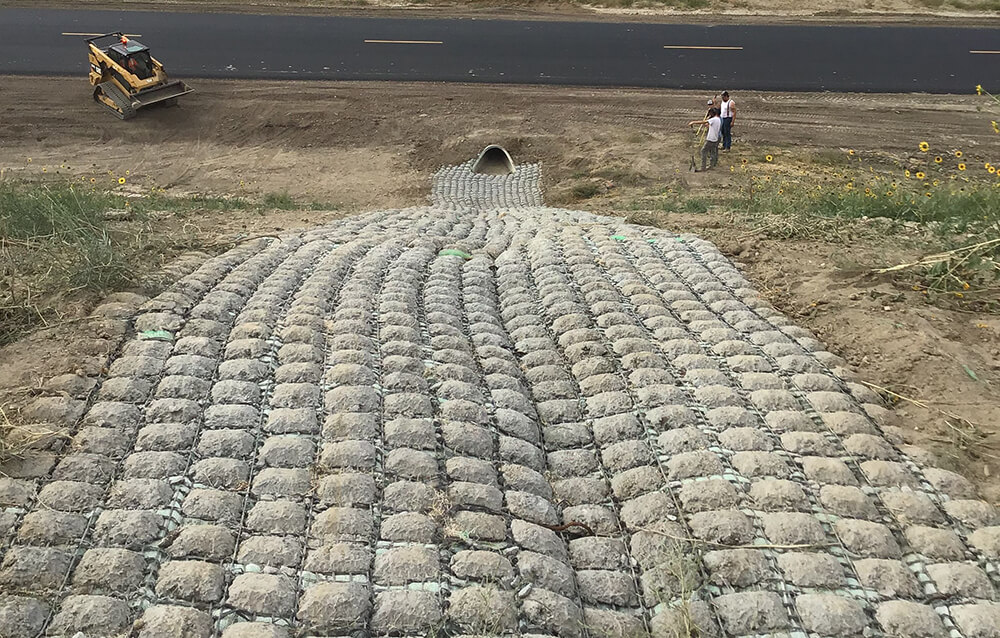Reliable Approaches by Memphis Erosion Control Solutions erosion control
Best Practices for Disintegration Control in Building Projects
Are you functioning on a building and construction job and concerned about disintegration control? In this short article, we will lead you via the finest practices for preventing disintegration on your website. Memphis Erosion Control Solutions excavation. Get all set to deal with disintegration head-on and make sure the success of your building project.
5 Crucial Erosion Control Strategies

To effectively control disintegration on your building and construction website, you'll require to execute vital methods such as slope stabilization and sediment control actions. Incline stablizing is vital in protecting against dirt disintegration on high slopes. Another effective strategy is the usage of disintegration control blankets or mats, which are placed on the incline and aid maintain soil particles while permitting plants to grow.
Effective Debris and Overflow Management

You can efficiently handle debris and drainage in your building and construction task by implementing proper erosion control steps. Sediment and overflow administration is important to stop disintegration and shield the surrounding setting. One reliable action is the installment of silt fencings along the border of the building and construction website. These fences help to include sediment and prevent it from going into close-by water bodies. One more vital technique is the implementation of disintegration control blankets or mats. These coverings provide a safety layer on bare dirt, minimizing the effect of rainfall and preventing disintegration. In addition, using sediment containers or debris traps can help to record debris and prevent it from entering stormwater systems. Normal maintenance of these measures is essential to guarantee their efficiency throughout the building project. This consists of cleansing and checking sediment containers and frequently replacing silt fencings and erosion control coverings as needed. By implementing these disintegration control steps, you can effectively handle sediment and drainage in your building task, lessening the influence on the setting and following governing demands.
Key Factors To Consider for Incline Stablizing
You require to meticulously examine the incline's features, such as its water drainage, angle, and make-up patterns. Look for signs of erosion, such as revealed origins, fractures, or slumping soil.
As soon as you have actually determined the unsteady areas, you can start applying procedures to support the slope. One usual technique is using retaining wall surfaces or terracing to produce a series of level actions, which can help disperse the weight and stop additional erosion. An additional choice is to plant vegetation on the incline, as the origins can help secure the dirt and control erosion. In addition, setting up erosion control coverings or mats can give instant defense while plant life ends up being recognized.
It's vital to on a regular basis keep track of the maintained slopes to ensure their performance. Watch out for any kind of signs of motion or disintegration, and take instant activity if necessary. Routine maintenance, such as checking and repairing any type of broken measures, is likewise important to guarantee lasting stability.
Best Practices for Plants and Dirt Protection
One effective means to shield plants and dirt on inclines is by consistently examining for indications of erosion and taking instant action if needed. Start by checking the incline for any type of indicators of disintegration, such as revealed origins, bare dirt spots, or sediment accumulation at the bottom. Implement disintegration control steps such as mounting disintegration control blankets, mulching, or even building maintaining wall surfaces if needed.
Implementing Proper Drainage Solutions
To properly execute proper water drainage systems, it's critical to think about the incline gradient and soil kind. When it pertains to taking care of water circulation and avoiding disintegration, understanding these aspects is necessary. The slope gradient plays a significant duty in determining how other water moves across the land. Steeper inclines can lead to much faster water flow, grass landscape boosting the risk of disintegration and flooding. On the other hand, gentler slopes allow water to stream more gradually, decreasing erosion capacity. By evaluating the incline gradient, you can develop an efficient drain system that suits the natural water activity.
Dirt type also affects water drainage system layout. Different dirt types have varying degrees of permeability, affecting how water is taken in and drained pipes. Sandy dirts tend to drain pipes faster due to their rugged appearance, while clay dirts have a slower drainage price due to their compact nature. Recognizing the soil kind assists in selecting proper drainage strategies, such as utilizing absorptive materials or mounting French drains. In addition, taking into consideration the soil features assists protect against waterlogging, which can cause poor plant development and damage to structures.
Verdict
Finally, when it involves erosion control in building and construction projects, you need to adhere to these finest techniques. Execute reliable sediment and runoff monitoring strategies to stop contamination. Think about incline stablizing methods to guarantee the stability of the website. Shield vegetation and soil by utilizing suitable steps. Develop appropriate drain systems to handle water flow (Memphis Erosion Control this post Solutions silt fences). By adhering to these crucial techniques, you can properly regulate disintegration and make certain the success of your building and construction task.
To efficiently regulate disintegration on your building site, you'll require to carry out vital techniques such as slope stablizing and debris control steps. Incline stablizing is important in preventing dirt erosion on high slopes. Another reliable technique is the usage of erosion control coverings or mats, which are placed on the incline and help preserve soil particles while enabling greenery to expand. One more option is to grow vegetation on the incline, as the roots can assist anchor the dirt and control erosion. Implement disintegration control measures such as mounting erosion control coverings, mulching, or even creating keeping wall surfaces if needed.